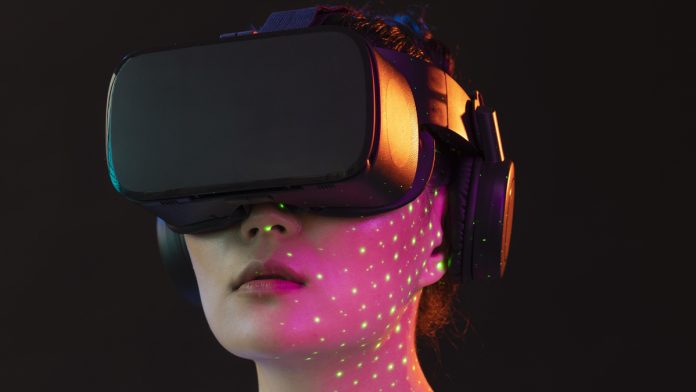In the dynamic realm of digital media, cinematic storytelling is being revolutionized by the integration of artificial intelligence (AI) with immersive technologies like augmented and virtual reality. This groundbreaking fusion is not just enhancing visual effects but is also transforming narrative construction and audience engagement. By enabling storytellers to create interactive and richly detailed worlds, this approach, often encapsulated by the phrase Augmented and Virtual Reality in Cinematic Storytelling Powered by AI, empowers filmmakers to go beyond traditional boundaries. As audiences become active participants rather than mere observers, the art of storytelling is evolving into an immersive, personalized experience that challenges and delights in equal measure.
| Table of Contents | |
|---|---|
| I. | AI-Enhanced Narrative Design in Immersive Media |
| II. | Real-Time Rendering and Visual Effects Powered by AI |
| III. | Procedural Content Generation for Virtual Cinematic Worlds |
| IV. | Emotion and Sentiment Analysis for Interactive Storytelling |
| V. | Cross-Platform Convergence: Bridging Traditional Cinematography with AR/VR |
| VI. | AI-Driven Character Animation and Behavioral Modeling |
| VII. | Immersive Sound Design and Spatial Audio Powered by AI |
| VIII. | Ethical and Psychological Impacts of Immersive Cinematic Experiences |
| IX. | User-Centric Interactive Experiences: AI as the Director |
| X. | Future Trends and the Evolution of Cinematic Storytelling |
AI-Enhanced Narrative Design in Immersive Media
In today’s digital era, storytellers are exploring new horizons with immersive media that blend technology and narrative in unprecedented ways. Filmmakers are now empowered to craft intricate plots and layered characters that engage audiences on multiple sensory levels. This emerging discipline leverages advanced algorithms to analyze audience preferences and refine story arcs dynamically, creating personalized and evolving narratives. At the heart of this transformation lies a synergy that is often described as Augmented and Virtual Reality in Cinematic Storytelling Powered by AI, where technology and creativity converge to captivate viewers.
Real-Time Rendering and Visual Effects Powered by AI
The visual spectacle of cinematic storytelling is rapidly evolving thanks to real-time rendering techniques that incorporate AI-driven processes. These innovative methods allow filmmakers to generate and manipulate complex visual effects on the fly, reducing post-production time while enhancing visual fidelity. Machine learning models predict lighting conditions, textures, and environmental details to produce stunning, hyper-realistic scenes that would otherwise require weeks of manual labor. This real-time magic reinforces the concept of Augmented and Virtual Reality in Cinematic Storytelling Powered by AI, where immediate creative decisions lead to immersive experiences.
Procedural Content Generation for Virtual Cinematic Worlds
Modern filmmaking now embraces procedural content generation as a cornerstone of building expansive virtual worlds. AI algorithms can automatically generate landscapes, cityscapes, and intricate interior environments with a level of detail and variability that keeps each cinematic experience unique. These dynamically generated backdrops not only reduce production costs but also open creative avenues for directors, allowing them to push the boundaries of visual storytelling. The integration of such advanced techniques is a vivid illustration of Augmented and Virtual Reality in Cinematic Storytelling Powered by AI, blending automation with artistry to redefine world-building.
Emotion and Sentiment Analysis for Interactive Storytelling
A crucial aspect of effective storytelling is understanding and responding to audience emotions. AI-powered emotion and sentiment analysis tools have enabled filmmakers to capture and interpret real-time feedback, adapting storylines and character arcs to evoke deeper emotional engagement. By analyzing social media, live audience reactions, and biometric data, directors can modify narrative pacing and intensity to resonate with viewers on a personal level. This cutting-edge approach, a clear demonstration of Augmented and Virtual Reality in Cinematic Storytelling Powered by AI, transforms static films into dynamic experiences that evolve with the audience’s mood.
Cross-Platform Convergence: Bridging Traditional Cinematography with AR/VR
The convergence of traditional cinematography with AR/VR technologies has ushered in a new era of hybrid storytelling. By seamlessly blending live-action footage with digitally rendered environments, creators are constructing narratives that transcend conventional screen boundaries. This cross-platform approach allows audiences to step into a film, experiencing the story from multiple perspectives, whether as an observer or an active participant. Such innovations underscore the transformative potential of Augmented and Virtual Reality in Cinematic Storytelling Powered by AI, where immersive technology reshapes the way, we perceive narrative and art.
AI-Driven Character Animation and Behavioral Modeling
Character development has reached new heights with AI-driven animation and behavioral modeling. Intelligent systems analyze vast datasets of human motion, facial expressions, and social interactions to produce characters that exhibit realistic and emotionally resonant behaviors. These systems enable seamless integration of animated figures into live-action scenes, creating a believable coexistence of digital and real characters. Through iterative learning, characters continuously evolve, reacting authentically to their environment and audience input. This evolution is a defining example of Augmented and Virtual Reality in Cinematic Storytelling Powered by AI, where technology enriches the portrayal of character depth and dynamism.
Immersive Sound Design and Spatial Audio Powered by AI
Sound design is as critical as visuals in creating an immersive cinematic experience. AI techniques now allow for the generation of adaptive soundscapes that reflect changes in narrative tone and environment, providing an additional layer of sensory engagement. Spatial audio technologies simulate realistic sound propagation, placing viewers right during the action and enhancing the emotional impact of every scene. This technological leap creates environments where every whisper, explosion, and musical note is perfectly tuned to the narrative context, a testament to the power of Augmented and Virtual Reality in Cinematic Storytelling Powered by AI, which harmonizes audio and visual storytelling in innovative ways.
Ethical and Psychological Impacts of Immersive Cinematic Experiences
While these technological advances offer tremendous creative opportunities, they also present ethical and psychological challenges. As films become more immersive and interactive, concerns arise regarding the manipulation of emotions and the potential for over-stimulation. Filmmakers and technologists are increasingly mindful of the responsibilities that come with wielding such powerful tools, ensuring that narratives do not exploit vulnerable audiences or blur the line between reality and simulation. This delicate balance is a core consideration in the realm of Augmented and Virtual Reality in Cinematic Storytelling Powered by AI, emphasizing the need for ethical guidelines and transparent practices as the medium evolves.
User-Centric Interactive Experiences: AI as the Director
The role of the audience in storytelling has evolved from passive observers to active participants, thanks in part to interactive technologies steered by AI. Innovative platforms now allow viewers to influence narrative outcomes, making choices that directly impact character development and plot progression. This democratization of storytelling transforms each viewer’s experience into a unique, tailored journey through the narrative landscape. In this context, AI assumes the role of an intelligent director, curating the story in real time based on interactive cues. This shift represents a fundamental aspect of Augmented and Virtual Reality in Cinematic Storytelling Powered by AI, where technology empowers audiences to become co-creators of their cinematic experience.
Future Trends and the Evolution of Cinematic Storytelling
The evolution of cinematic storytelling is poised to accelerate as AI and immersive technologies continue to advance. Future developments may include even more sophisticated narrative algorithms, deeper emotional interactivity, and fully integrated multisensory environments that push the boundaries of traditional film. As filmmakers’ experiment with new techniques and audiences become increasingly tech-savvy, the narrative landscape will expand into realms that once belonged only to science fiction. This forward momentum embodies the spirit of Augmented and Virtual Reality in Cinematic Storytelling Powered by AI, setting the stage for an era where technology and storytelling merge to create truly transformative experiences.

